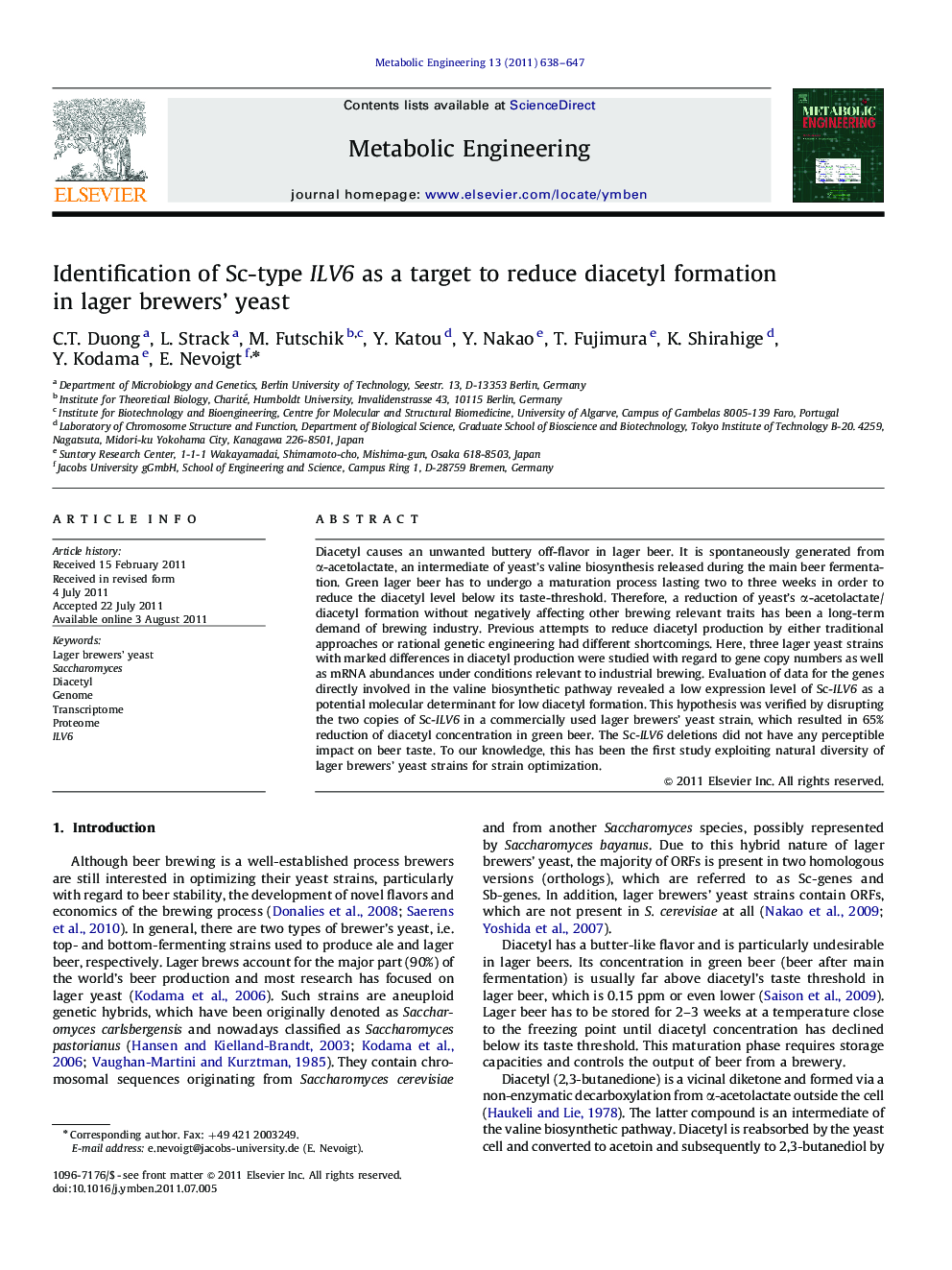| Article ID | Journal | Published Year | Pages | File Type |
|---|---|---|---|---|
| 31765 | Metabolic Engineering | 2011 | 10 Pages |
Diacetyl causes an unwanted buttery off-flavor in lager beer. It is spontaneously generated from α-acetolactate, an intermediate of yeast's valine biosynthesis released during the main beer fermentation. Green lager beer has to undergo a maturation process lasting two to three weeks in order to reduce the diacetyl level below its taste-threshold. Therefore, a reduction of yeast's α-acetolactate/diacetyl formation without negatively affecting other brewing relevant traits has been a long-term demand of brewing industry. Previous attempts to reduce diacetyl production by either traditional approaches or rational genetic engineering had different shortcomings. Here, three lager yeast strains with marked differences in diacetyl production were studied with regard to gene copy numbers as well as mRNA abundances under conditions relevant to industrial brewing. Evaluation of data for the genes directly involved in the valine biosynthetic pathway revealed a low expression level of Sc-ILV6 as a potential molecular determinant for low diacetyl formation. This hypothesis was verified by disrupting the two copies of Sc-ILV6 in a commercially used lager brewers' yeast strain, which resulted in 65% reduction of diacetyl concentration in green beer. The Sc-ILV6 deletions did not have any perceptible impact on beer taste. To our knowledge, this has been the first study exploiting natural diversity of lager brewers' yeast strains for strain optimization.
► Low diacetyl in lager yeast traced back to low Sc-ILV6 copy number and mRNA abundance. ► Deletion of Sc-ILV6 in a lager brewer's yeast strain reduced diacetyl by 65%. ► The Sc-ILV6 deletions did not have perceptible impact on beer taste.
